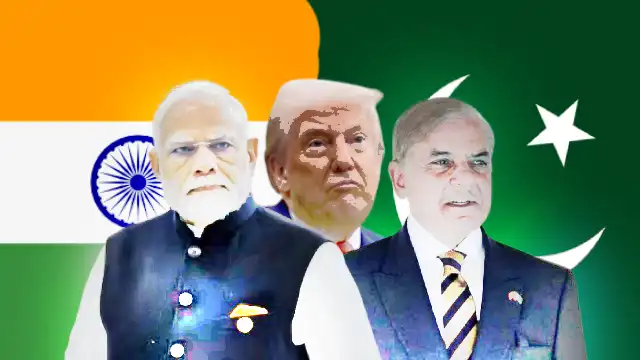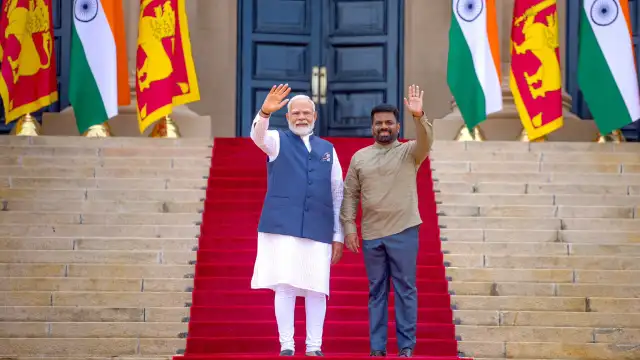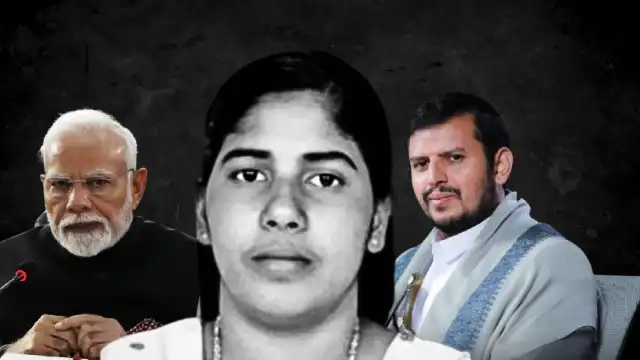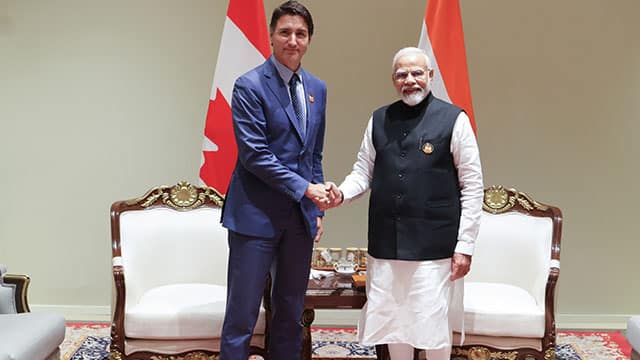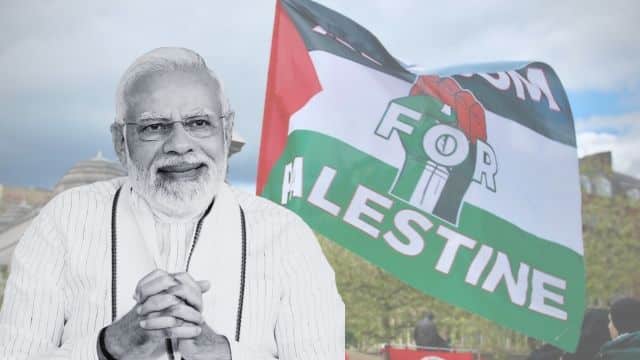After four days of cross-border hostilities, India and Pakistan have reached a ceasefire agreement, which took effect at 5pm (IST) on May 10th 2025.
The abrupt truce came as US President Donald Trump claimed credit for brokering peace between the nuclear-armed neighbours.
While the Indian side claimed that the Pakistani director general of military operations called his Indian counterpart and proposed a ceasefire, the US claimed credit of the development.
Questions remain about India’s apparent capitulation to American pressure at a time when its national security faces unprecedented challenges, ironically under Prime Minister Narendra Modi and his far-right Bharatiya Janata Party (BJP), who contest elections boasting of strengthening national security.
American intervention halts escalation
The announcement regarding India and Pakistan reaching a ceasefire deal arrived unexpectedly on Saturday. Hours earlier, both sides had been claiming military successes and showing no signs of de-escalation.
The sudden about-face followed direct American involvement. But it wasn’t a new trend. Back-channel efforts to de-escalate the situation have been working since May 7th.
“After a long night of talks mediated by the United States, I am pleased to announce that India and Pakistan have agreed to a FULL AND IMMEDIATE CEASEFIRE,” Mr Trump posted on Truth Social.
— Donald J. Trump (@realDonaldTrump) May 10, 2025
The American president’s triumphant tone suggested a significant diplomatic victory for his administration.
Pakistan quickly acknowledged the American role.
“Pakistan appreciates the US for facilitating this outcome, which we have accepted in the interest of regional peace and stability,” Pakistani Prime Minister Shehbaz Sharif wrote on X (formerly Twitter).
He specifically thanked Vice President JD Vance and Secretary of State Marco Rubio for their “valuable contributions to peace.”
The conflict, which began on May 7th when India attacked alleged terrorist bases in Pakistan-controlled territories to avenge the April 22nd Pahalgam terror attack victims, resulted in over 66 casualties on both sides.
India’s Jammu & Kashmir experienced a massive loss of civilian lives, including children, due to Pakistani shelling.
Among the casualties was Rajouri’s Additional Deputy Commissioner Raj Kumar Thapa, killed by Pakistani shelling early Saturday before the ceasefire took hold.
Modi’s curious silence
The most striking aspect of the India and Pakistan ceasefire has been Mr Modi’s conspicuous absence from public view.
The normally vocal leader, known for touting India’s military prowess, remained silent throughout the crisis.
It’s unlike 2019, when his larger-than-life image overtook the internet following the controversial surgical strikes at Balakot in Pakistan-occupied Jammu & Kashmir.
Mr Modi’s social media accounts showed only pictures of him attending high-level security meetings on May 9th and 10th.
He offered no statements about the “Operation Sindoor”, the casualties or the ceasefire agreement itself.
This silence stands in stark contrast to his usual approach during national security crises.
Some analysts suggest this reflects a carefully calibrated image management strategy.
Having positioned himself as a peace envoy to Russia in 2024—when he told Vladimir Putin that “this isn’t an era of war”—Mr Modi may find it difficult to now champion military action.
Others point to political calculations. With Mr Modi reportedly planning retirement in September 2025 in line with his party’s age limit of 75, he may wish to leave office with a dual reputation: as a strongman domestically and as a peacemaker internationally.
There are indications that a Nobel Peace Prize is what Mr Modi is vying for, but Mr Trump is leaving no scope for it with his pre-emptive diplomatic manoeuvres that pushed Ukraine towards a ceasefire with Russia and ensured that India and Pakistan also
Whatever the reason, the absence of India’s most powerful voice during a national security crisis has raised eyebrows.
It left Foreign Minister S Jaishankar and Foreign Secretary Vikram Mishri to announce the India and Pakistan ceasefire without their supreme leader’s visible backing.
Among all ministers, Mr Jaishankar had announced the truce on his X handle.
India and Pakistan have today worked out an understanding on stoppage of firing and military action.
— Dr. S. Jaishankar (@DrSJaishankar) May 10, 2025
India has consistently maintained a firm and uncompromising stance against terrorism in all its forms and manifestations. It will continue to do so.
Confirming the US hand behind India and Pakistan going for a ceasefire, Mr Jaishankar, who had donned the attire of an anti-West crusader during Joe Biden’s presidency, had posted about his discussions with Mr Rubio.
Had a conversation with US @SecRubio this morning.
— Dr. S. Jaishankar (@DrSJaishankar) May 10, 2025
India’s approach has always been measured and responsible and remains so.
🇮🇳 🇺🇸
Lingering violations test the truce
Despite the India and Pakistan ceasefire announcement, both sides immediately accused each other of violations. Residents of Indian Jammu & Kashmir reported Pakistani drone incursions into Indian airspace, while people in Lahore claimed Indian drones were targeting Pakistani territories.
By 11pm, blackouts in Jammu & Kashmir had reportedly ended as local conditions normalised. Yet the exchange of accusations continues, casting doubt on the durability of the agreement.
Jammu & Kashmir’s Chief Minister Omar Abdullah has repeatedly accused Pakistan of violating the ceasefire until Saturday night.
This is no ceasefire. The air defence units in the middle of Srinagar just opened up. pic.twitter.com/HjRh2V3iNW
— Omar Abdullah (@OmarAbdullah) May 10, 2025
In the late evening, Mr Mishri addressed the press regarding “constant violations by the Pakistani side.” His briefing highlighted the fragility of a ceasefire arrangement imposed through external pressure rather than mutual desire for peace.
The situation remains fluid, according to locals in Jammu & Kashmir.
The hasty arrangement appears to have delivered a temporary respite rather than a lasting solution to the long-standing animosity between the nuclear-armed neighbours.
India and Pakistan going for ceasefire as a face-saving compromise
The India and Pakistan ceasefire serves as a convenient face-saver for both governments, though arguably more so for Pakistan. Having suffered the initial embarrassment of Indian strikes on its territory, Pakistan can now claim diplomatic success through American intervention.
For India, the calculus appears more complex. Having launched “Operation Sindoor” in response to the April 22nd Pahalgam attack that killed 26 tourists, India accepted a ceasefire before achieving its stated objective of punishing those responsible for terrorism.
Opposition parties have seized on this apparent contradiction. Communist Party of India leader D Raja questioned the role of the United States.
He wrote on X, “We believe India and Pakistan have the maturity to address their issues bilaterally, without interference by Donald Trump and the USA. It is for Prime Minister Modi to tell the nation and our people that what was the ‘mediation’ done by the USA?”
The CPI, along with other progressive forces, has consistently advocated for a ceasefire between India and Pakistan, stressing that peace and regional stability can only be achieved through dialogue and diplomacy.
— D. Raja (@ComradeDRaja) May 10, 2025
After the heinous terrorist attack in Pahalgam, Operation Sindoor… pic.twitter.com/tRgPC2dOh6
The Indian National Congress went further, demanding an all-party meeting to clarify what orders were issued by Washington DC, party’s leader Jairam Ramesh tweeted.
In view of the unprecedented announcements from Washington DC, there is now a need, more than ever before, for –
— Jairam Ramesh (@Jairam_Ramesh) May 10, 2025
1. The PM to chair an all-party meeting and take political parties into confidence
2. A special session of Parliament to discuss the events of the last eighteen…
The party pointedly contrasted Mr Modi’s approach with that of Indira Gandhi, whose government forced Pakistan to surrender in 1971 despite American threats.
“We have our backbones straight, enough will & resources to fight all atrocities. Times have passed when any nation sitting 3 or 4 thousand miles away could give orders to Indians on the basis of colour superiority to do as they wished.” Indira Gandhi
— Congress (@INCIndia) May 10, 2025
PM Indira Gandhi to US… pic.twitter.com/P1Y3DaFkeu
Meanwhile, after hearing that India and Pakistan have agreed upon a ceasefire, Mr Modi’s fans have accused the government of betrayal on social media, targeting Mr Jaishankar and Mr Mishri for the decision, without naming Mr Modi.
While there are questions over how the US pressure pushed both sides to a ceasefire, the incident proved the immense influence of the West over the duo.
Great power competition in South Asia
The timing of American intervention in the India and Pakistan ceasefire suggests a desire to pre-empt other powers from claiming a peacemaking role.
With India holding membership in both BRICS and the Shanghai Cooperation Organisation (Pakistan belongs to the latter), there existed a real possibility that these groupings might attempt to broker peace.
However, due to Russia’s grand celebration of the Soviet Union’s Victory Day against Nazi Germany, the leadership of China, Russia, and other countries of the multipolar bloc remained busy and didn’t get a chance to intervene.
Meanwhile, Iran seized the opportunity. Iran’s Foreign Minister Abbas Araqchi had called for restraint upon landing in New Delhi on Thursday, potentially opening the door for mediation by powers outside the Western orbit.
If Iran, which shares cordial relations with India and Pakistan, managed to broker a ceasefire, it’d have indicated the total waning of American influence on the Global South.
Mr Trump’s sudden interest in the conflict appears designed to forestall such initiatives.
Mr Rubio conducted calls with Pakistan’s Army Chief Asim Munir and the foreign ministers of both countries.
The State Department noted that Rubio urged them to “re-establish direct communication to avoid miscalculation” while offering American assistance “in starting constructive talks”.
Washington-based analyst Michael Kugelman highlighted the significance of Mr Rubio’s direct engagement with Pakistan’s military chief: “If you want to talk to the Pakistanis about de-escalation, you need to talk to General Munir.”
Strategic calculations and compromises
India and Pakistan agreeing to a ceasefire quickly raises questions about their strategic position.
With approximately double Pakistan’s military strength, India theoretically held the upper hand in any conventional conflict.
Yet it agreed to a truce before neutralising the hydra of Islamist terror in the region—the Pakistani Army.
This decision may reflect economic considerations.
India currently faces delicate trade negotiations with the United States, and resisting American pressure could jeopardise those talks.
Moreover, New Delhi recently failed to block a $1bn IMF loan tranche to Pakistan amid the conflict.
The outcome appears to undermine India’s aspirations to be a champion of multipolarity.
By acquiescing to American pressure, the Modi government has prioritised short-term economic interests over long-term strategic autonomy.
This shift may benefit Pakistan, which has effectively leveraged American connections to neutralise India’s military advantage.
Pakistan’s political establishment certainly sees the ceasefire as a victory.
Pakistan People’s Party’s chairman Bilawal Bhutto Zardari declared, “Now that both India and Pakistan have agreed to a ceasefire and dialogue, we welcome this as a victory for diplomacy.”
He specifically thanked “the US, Saudi Arabia and all countries involved in achieving this historic milestone.”
As the dust settles on four days of conflict, India and Pakistan opting for a ceasefire under the US’s pressure appears to have averted immediate catastrophe.
Yet the manner of its achievement—through American intervention rather than bilateral agreement—may have long-lasting implications for regional power dynamics and India’s strategic independence.
Join our channels on Telegram and WhatsApp to receive geopolitical updates, videos and more.

